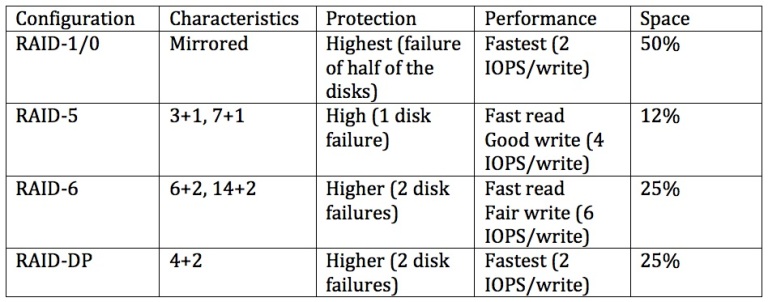 D-day has arrived, you have just completed the 75 minute session presenting and defending your design. You have left the room for the 10 minute break and now you have returned for the 45 minute “Design Scenario”. How should you tackle this task? What should be your strategy?
D-day has arrived, you have just completed the 75 minute session presenting and defending your design. You have left the room for the 10 minute break and now you have returned for the 45 minute “Design Scenario”. How should you tackle this task? What should be your strategy?
List of articles in my VCDX Deep-Dive series (more than 70 posts)
Some initial pointers:
- Segment the whiteboard into a template (Requirements, Constraints, Assumptions, Risks, Compute, Network, Storage, VM, VIM).
- This exercise only requires you to deliver a LOGICAL design, not PHYSICAL. So ignore steps 4 and 5 of the diagram below.
- Do not waste time on PHYSICAL components unless specifically asked to.
- This strategy gives you 20 minutes of time to earn extra points with additional questions.
- The panelists want you to succeed, listen carefully to their responses for clues and hints.
- React to their answers if something does not make sense.
- Each scenario has additional hidden bonus points; the panelists are following a script where you need to ferret out the information by asking the correct questions.
- Start with the silo you are most comfortable with after the Conceptual Model (assuming it is a deliverable for the scenario), this will get you started and then give you a chance to warm up.
- Make sure you deliver whatever is requested in the scenario slides.
- Try to post three logical design decisions in each area.
- Speak out loud, you cannot score points if you are silent.
- Forty-five minutes is not enough time to build any kind of complete design, you just need to demonstrate your ability to extract information from the customer and begin the process of laying the foundation.
- Be mindful of the 45 minute timer, stick to your strategy and be wary of the “Rabbit Hole” – do not get stuck in one section, spinning your wheels, asking questions that do not advance and improve your position.
- Practice, practice, practice. This is an important part of the defence, you should have mocked this scenario with your Study Group at least 6 times before D-Day.
Conceptual Model – Possible Questions: (1-5min)
- What are the panelists asking you to deliver? Complete these deliverables first.
- What is the Design Objective?
- What are the Requirements, Constraints & Assumptions?
- What is the Budget?
- What equipment do you have allocated to this project? Do you have existing vSphere infrastructure/licences? If yes, can it be used for this project?
- Do you have an Enterprise Architecture?
- Is there a long-term strategy for this project?
- What is the availability of the design?
- Is it a multi-site solution with BC/DR? (If yes, what are the RPOs and RTOs)?
Compute (6-10min)
My previous blog post on Host Design covers this in detail. Other possible questions to consider:
- PCIe/USB dongles required as part of P2V process?
- VMDirectPathI/O should be used?
- Right Size VMs after conversion?
Storage (11-15min)
Possible questions to consider:
- FC, FCoE, iSCSI, NFS, VSAN, vFRC?
- Tiers of Storage?
- Peak IOPS, IO sizes, etc.
- LUN sizes (remember Predictive or Adaptive method)
- Possible Calculation 1 – Peak storage capacity required?
- Possible Calculation 2 – Peak IOPS required?
- Possible Calculation 3 – Average IO Size?
- Possible Calculation 4 – Read/Write Ratios?
- Possible Calculation 5 – Number of Disks per Tier?
- Storage Array: Active/Active, Active/Passive or ALUA?
- RAID Configuration, Disk types?
Have an understanding of RAID Levels – RAID-0, 1/0 or 1, 5, 6, DP with respect to Cost, Performance, Space Utilisation and Recoverability. For example:
Example Storage Logical Design Deliverable:
Network (16min-20min)
Possible questions to consider:
- Traditional or Clos-type Switch Architecture?
- Traffic flows: North/South or East/West?
- VDS/VSS/Cisco Nexus 1000V?
- Hybrid or VDS only?
- 1GE or 10GE?
- CNA or 10GE?
- Possible calculation: What is the peak network throughput required (north/south and east/west)?
Example Network Logical Design Deliverable:
Virtual Infrastructure Management (Availability & Datacenter) (21-25min)
Possible questions to consider (may have covered some of this in the Compute section):
- vSphere HA/DRS? (Limits: 32 hosts, 4,000 VMs)
- Dedicated management cluster, virtual vCenter, vCSA?
- vSphere Licences?
- vCenter Design?
- vCOPs?
Example vCenter Logical Design Deliverable:
Additional Areas (26-45min)
You may have time to ask about:
- VM design – ParaVirtual drivers, OS types, VM Tools, etc.
- Security – AV, Firewalls, Compliance/Governance, etc.
- Backup/Restore
- BC/DR
Other reference sites:
- Josh Odgers VCDX Defence Essentials – Part 2- Preparing for the Design Scenario





Great analysis and breakdown, Rene!
Thank you, Tim.
Great strategy Rene, thanks for taking the time to share the information.
Thank you, Craig.
Excellent Collection of VCDX Goodies Rene.. You are a true ambassador to show us the path!!
Thank you, Sunny!
Hi Rene,
can you please share the design template which you used or point to right url, I’m looking for the documents which contains business drivers, requirements, CAD etc.
http://www.lulu.com/shop/john-yani-arrasjid-vcdx-001-and-mark-gabryjelski-vcdx-023-and-chris-mccain-vcdx-079/it-architect-foundation-in-the-art-of-infrastructure-design-a-practical-guide-for-it-architects/ebook/product-22648715.html